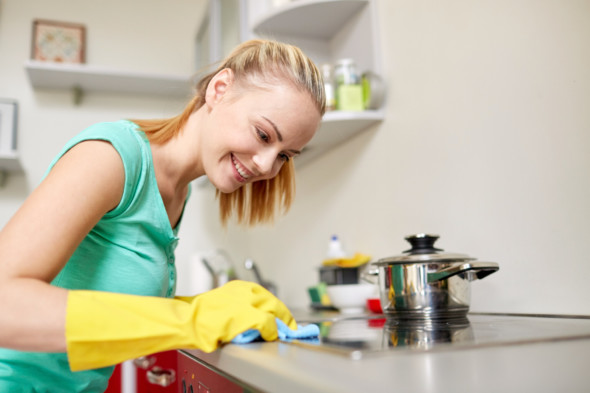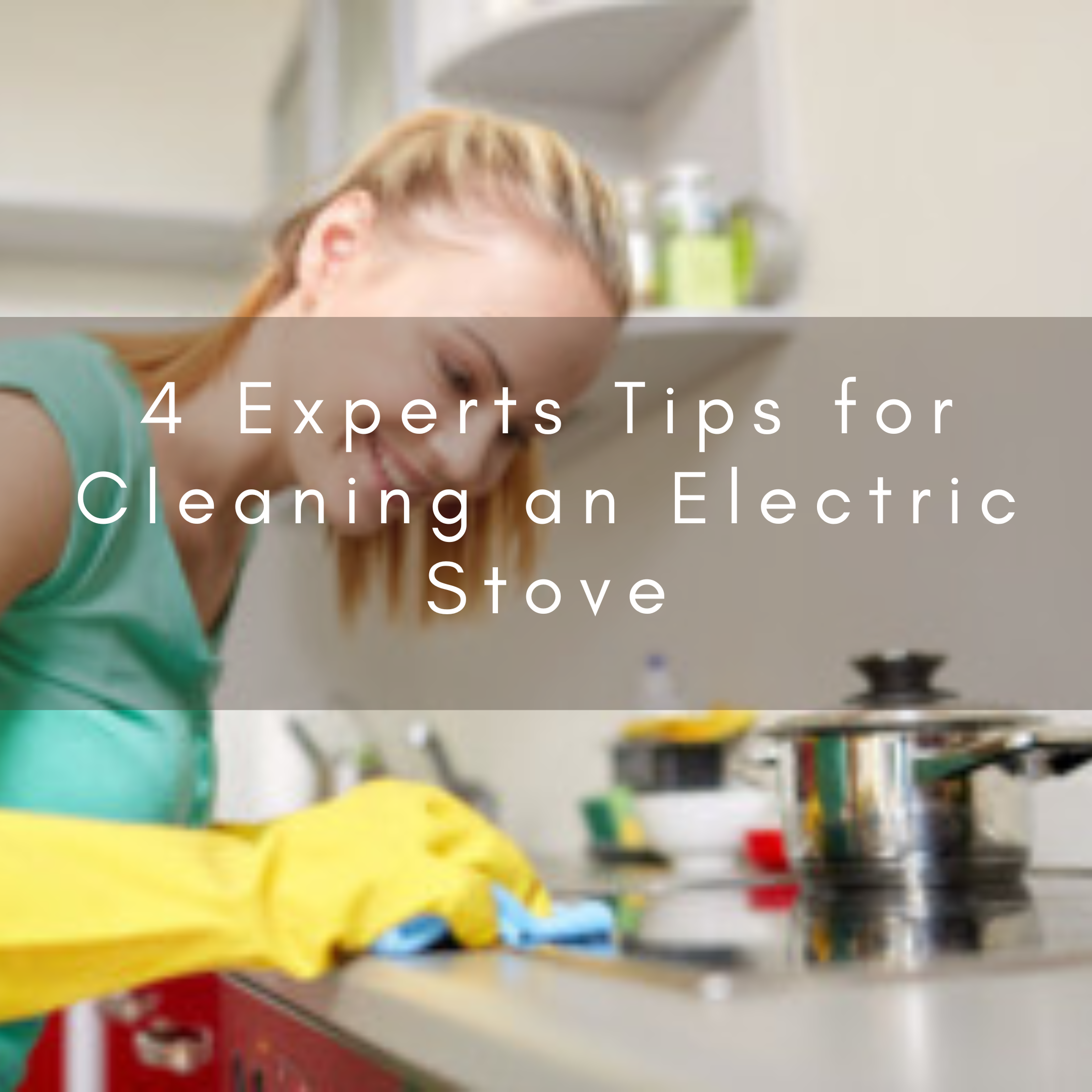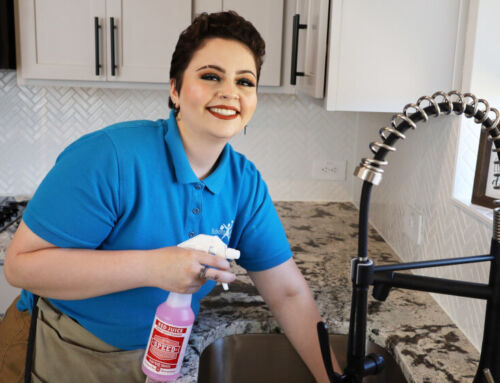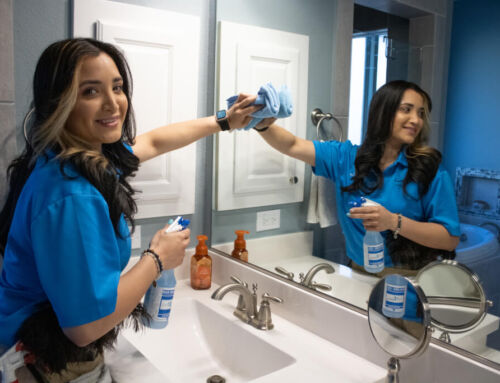
Do you have a favorite burner on your stove? Most other people do too; the front right burner to be exact!
If you use your stove every day, you realize how quickly food and grime can build up, especially around your favorite burner. A clean stovetop is essential for cooking safety and culinary creativity.
When was the last time you cleaned your stovetop? Don’t let those grease spots build up in the back of your mind.
Check out these four tips for cleaning an electric stove and more!
1. Keep Up With Daily Grime
Don’t let food and grease collect for days or weeks. Wipe down your stovetop after every use, and remove grease from the drip pan promptly. Food and grease in your stove aren’t just unsightly, they cause half of all grease fires.
2. Use Gentle Cleaners
You don’t need to use maximum-power cleansers on your stovetop. In most scenarios, a simple vinegar-water mix or baking soda paste will remove any grease. Never use household cleaners that aren’t specifically designed for stovetops.
3. Soak It In
Sometimes your cleaners just need a little more time to work their magic. For an effortlessly smooth clean, soak your drip pans and saturate your stovetop before wiping them down.
4. Set Yourself Up for Success
Use smooth-bottomed pans on glass stove tops and never clean with harsh scrubbing materials. Scratching the surface of your stove will make it easier to collect grease and grime. If you have a glass stove, scratches can also ruin its seamless charm.
How to Clean an Electric Stove Top
At some point in their life, everyone should learn how to clean a stove top. If you’re reading this article, today’s your lucky day!
Before your electric stove cleaning, always make sure the heat dials are off and the coils are cool. Never clean a stove while it’s still hot. If your burner is malfunctioning or you want to use extra precautions, unplug the stove from the wall before cleaning.
1. Remove Coils and Drip Pans
If you have a glass-top electric stove, you can skip to step two.
If your stove has metal coils and drip pans, removing them will ensure the best clean. Look underneath the coils to locate where the burner connects to the receptacle block.
Grab the opposite side from where the burner connects to the stove, and lift about an inch. Be careful not to lift the coil too high while pulling, or you could bend the metal components.
Firmly pull the burner away from the stove until it disconnects from the receptacle block. Set the burners aside and remove the drip pans. Remove any visible food pieces hiding underneath the drip pan.
2. Wipe With a Dry Cloth
Use a paper towel or soft cleaning rag to wipe away dust, pet hair, and crumbs from your stovetop. Start with the rag at the back of your stovetop, and drag all the dry grime forward to the front.
Repeat in sections across your stove until all of the dirt lays along the front of your stove. Then, wet your cloth and collect all the crumbs in one swift motion along the edge.
3. Wipe With a Wet Sponge
In your kitchen sink or a separate container, mix a few drops of dish liquid into warm water. Grab a soft cleaning cloth or a fresh sponge and dip it into the soapy mixture. Lightly wring out your sponge, then use it to wipe down the stovetop.
It’s best to avoid using the rough side of your sponge, especially if you have a glass stovetop. Glass stovetops can scratch quite easily, ruining their seamless appearance and making them harder to clean in the future.
Use light, circular motions to rub away any grease spots or food residue. If the stains are especially sticky, drip soapy water onto the spots and let it soak for a few minutes. You can also make a paste with baking soda and water to scrub away the gunk.
You can gently clean the edges of each burner hole, but be careful not to wet the electrical components.
4. Rinse and Dry Thoroughly
Run your cloth or sponge under the faucet to rinse out all of the soap and dirt from your stovetop. With a clean, wet sponge, go back over the stovetop to rinse away the soap. You may have to wring and rinse the stove several times to remove all soap residue.
Lastly, use a dry paper towel or rag to dry the stovetop and wipe up any remaining soap and grime.
5. Clean and Return the Coils
Usually, you can remove food residue from your coils simply by turning the stove on a high heat. Over time, however, residue buildup can damage your coils and increase the risk of an accidental fire. Luckily, it’s easy to clean the coils and drip pans before returning them to your stovetop.
Fill your kitchen sink with warm, soapy water and allow the drip pans to soak. After a few minutes, you should be able to easily wipe away any grease or food build-up. If necessary, you can use the same baking soda paste used on the stovetop to clean the drip pans.
Allow the drip pans to dry completely before replacing them on your stovetop. Some drip pans can be washed in the dishwasher, but you should confirm with your stove’s manual before trying this method.
To clean the electrical coils themselves, you can use a Mr. Clean Magic Eraser, a microfiber cloth, or a dish sponge and soapy water. Don’t submerge the coil in water, and avoid getting any water or soap on the coil’s electrical plug. Rinse and dry the plug completely before reinstalling it on your stove.
Frequency for Cleaning an Electric Stove
How often you clean your stove will depend on how much you cook, your family lifestyle, and the overall dust and pet hair in your home. In general, you should wipe down the stovetop after every use to keep residue from building up. Most people should give their stove a thorough cleaning every two to three weeks.
The Stove Is the Hearth of the Home
Modern kitchens just wouldn’t be the same without the convenience and ease of a stove. Cleaning an electric stove daily will keep your kitchen feeling safe, clean, and welcoming. When your stove is clean, your culinary creativity can thrive!
Make the rest of your home feel as cozy as your kitchen with a visit from Buckets and Bows! Sit back, relax with a coffee, and admire your spotless stove top; click here to discover your instant online quote!








Leave A Comment